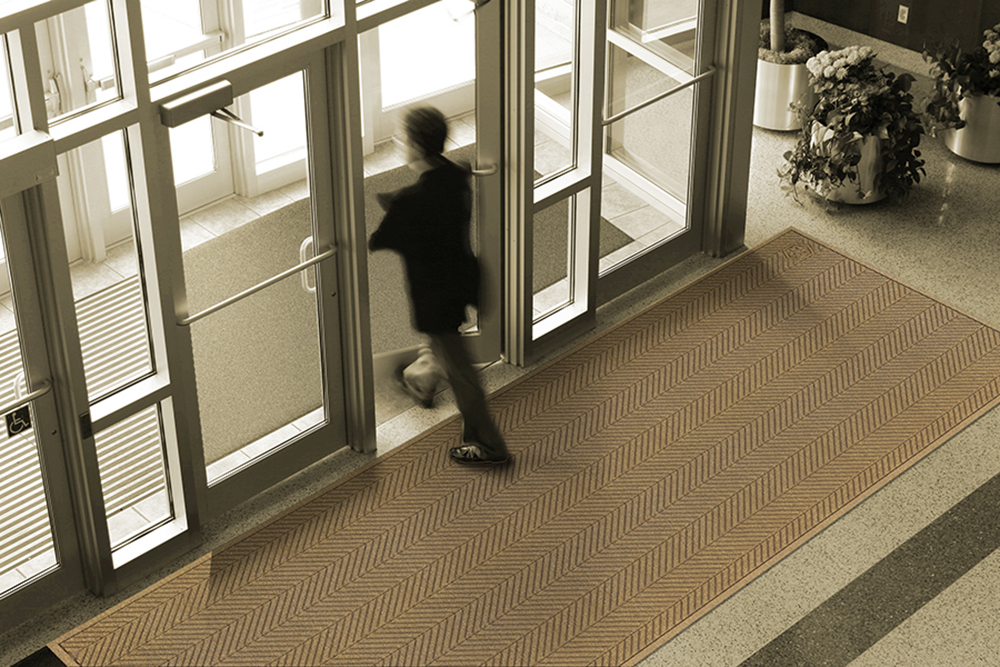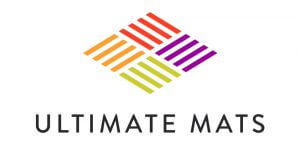
Why use Entrance Matting?
Entrance matting is a simple yet highly effective way to maintain cleanliness and safety in any building.
Whether you manage a commercial space or want to keep your home pristine, understanding the benefits of entrance matting can make a significant difference. This article will explore the importance of entrance matting, its benefits, the role of branding and logo mats, and how to choose and maintain the right mats for your needs.
In this article, you will learn:
- How entrance matting enhances safety and cleanliness
- The benefits of branding and logo mats for your business
- Tips for choosing and maintaining entrance mats effectively
Let’s dive into the first section to understand the importance of entrance matting.
The Importance of Entrance Matting
Entrance matting plays a crucial role in maintaining the cleanliness and safety of any building. By trapping dirt and moisture at the door, entrance mats prevent these elements from being tracked inside, significantly reducing cleaning efforts and costs. Additionally, a well-placed entrance mat can make a positive first impression, enhancing the overall aesthetics of your space. Clean, well-maintained entryways set a welcoming tone for visitors and can reflect the professionalism and care of the establishment.
Benefits of Entrance Matting
Entrance matting offers numerous benefits beyond cleanliness and aesthetics. One of the primary advantages is the improvement of safety. Entrance mats reduce the risk of slips and falls by absorbing moisture and providing a non-slip surface, which is particularly crucial in wet or icy conditions. Additionally, they help to extend the life of your flooring by preventing wear and tear caused by dirt and debris. This not only saves on maintenance and replacement costs but also preserves the look and feel of your floors, ensuring they remain in top condition for longer.
Furthermore, entrance matting contributes to a healthier indoor environment by reducing the amount of dust and allergens that enter the building. This can be especially beneficial for individuals with allergies or respiratory issues, promoting overall well-being for everyone who enters the space.
The Role of Branding and Logo Mats
Branding and logo mats offer a unique opportunity to enhance brand visibility while serving the practical purposes of entrance matting. These mats can be customized with your company’s logo, colors, and slogans, turning a simple functional item into a powerful branding tool. Placed at the entrance, logo mats create an immediate impression, reinforcing brand identity as soon as visitors walk through the door.
Logo mats contribute to creating a professional and welcoming atmosphere. They show attention to detail and a commitment to brand consistency, which can impress clients, customers, and partners. In high-traffic areas, a well-designed logo mat can act as a constant reminder of your brand, helping to build recognition and loyalty over time.
Customization options for logo mats are vast, allowing businesses to choose designs that best represent their brand. From bold and vibrant logos to subtle and sophisticated designs, the possibilities are endless. The impact of these mats goes beyond aesthetics; they communicate a sense of pride and professionalism, setting the tone for the rest of the visitor experience.
Choosing the Right Entrance Matting
Selecting the appropriate entrance matting for your space involves considering several key factors to ensure maximum effectiveness and benefit. Here are some essential aspects to keep in mind:
Location and Traffic
The location of the mat and the amount of foot traffic it will receive are crucial considerations. High-traffic areas, such as main entrances, require durable mats designed to withstand heavy use, while lower-traffic areas may benefit from lighter mats.
Climate and Weather Conditions
The climate and weather conditions of your area should influence your choice. In regions with heavy rainfall or snow, mats with high absorbency and non-slip features are vital to keep floors dry and safe. For drier climates, dust and dirt control may be the primary concern.
Material Considerations
Entrance mats come in various materials, each with its own benefits. Common materials include:
- Coir: Made from coconut fibers, coir mats are excellent for scraping dirt off shoes but may wear out quickly in high-traffic areas.
- Rubber: Durable and easy to clean, rubber mats are ideal for areas that experience a lot of moisture.
- Nylon or Polypropylene: These synthetic materials are highly absorbent and durable, making them suitable for both indoor and outdoor use.
Size and Placement
Ensure the mat is large enough to cover the entryway effectively. A general rule is that an entrance mat should allow for at least two steps to remove dirt and moisture from shoes. Proper placement is also crucial; the mat should be the first thing people step on when entering the building.
Choosing the right entrance matting involves balancing aesthetics with functionality to ensure both safety and brand enhancement.
Maintenance and Care of Entrance Mats
Proper maintenance and care of entrance mats are essential to ensure they remain effective and attractive over time. Here are some guidelines to keep your mats in top condition:
Regular Cleaning Routines
Regular cleaning is crucial for maintaining the effectiveness of entrance mats. For most mats, this includes daily vacuuming to remove dirt and debris. In high-traffic areas, more frequent vacuuming may be necessary. For mats that capture moisture, it’s important to ensure they are dried out regularly to prevent mold and mildew growth.
Deep Cleaning Methods
Periodically, entrance mats will require deep cleaning to remove embedded dirt and restore their appearance. This can be done through various methods, depending on the material of the mat. For instance, rubber mats can be hosed down and scrubbed with mild detergent, while carpeted mats may need professional steam cleaning. Always follow the manufacturer’s cleaning instructions to avoid damage.
Replacement Guidelines
Even with the best care, entrance mats will eventually wear out and lose their effectiveness. Signs that a mat needs replacing include visible wear and tear, reduced ability to trap dirt and moisture, and a general deterioration in appearance. Regularly inspect your mats and plan for replacements to maintain the highest level of cleanliness and safety.
Tips for Longevity
- Rotation: Rotate mats in high-traffic areas to ensure even wear.
- Drying: Ensure mats are thoroughly dried after cleaning to prevent mold growth.
- Protective Measures: Use underlay or anti-slip pads to keep mats in place and protect floors.
Proper maintenance not only extends the life of your mats but also ensures they continue to provide safety, cleanliness, and a positive first impression for your visitors.
Conclusion
Entrance matting is more than just a functional necessity; it’s an investment in the cleanliness, safety, and branding of your space. By understanding the importance of entrance matting, recognizing its benefits, and choosing the right type for your needs, you can make a significant positive impact on your environment.
